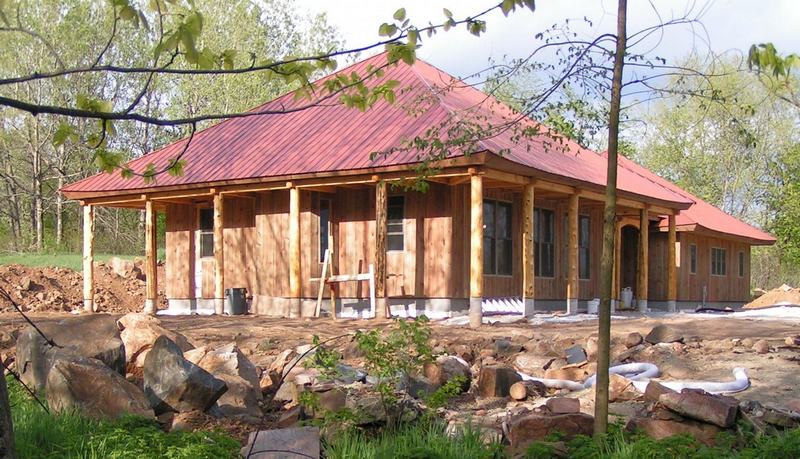Buddhist Women on a Path of Spiritual Awakening
Blessing Each Moment
 Over 25 years ago, I took the 10-precept nun’s ordination in Myanmar; and five years ago, I returned to Canada to establish Sati Saraniya Hermitage. Recently, as we emerged from our annual Winter retreat to see the snow melting and Canada geese flocking home, I reflected on the impermanence of all things and especially how unwavering refuge in the Dhamma has been my true home.
Over 25 years ago, I took the 10-precept nun’s ordination in Myanmar; and five years ago, I returned to Canada to establish Sati Saraniya Hermitage. Recently, as we emerged from our annual Winter retreat to see the snow melting and Canada geese flocking home, I reflected on the impermanence of all things and especially how unwavering refuge in the Dhamma has been my true home.
During our time of seclusion, the Temple builders respectfully and quietly continued working. They framed interior walls, roughed in the electrical wiring, plumbing and heating, and sprayed foam insulation in the walls. In the last few weeks of Spring, they created the beautiful tongue-and-groove wood ceiling of the meditation hall, installed the windows and mounted the exterior cladding in preparation for a day of honouring our parents and teachers on the Path which we hosted together with the monks from Tisarana Buddhist Monastery.
In the transitions we make from times of quiet such as retreat to the business of daily activities, we have to attend to many tasks and responsibilities. These may appear to be obstacles to our practice. In fact, they are opportunities for us to continue developing mindfulness in all four postures while honing our Dhamma skills with greater wisdom, compassion and equanimity.
While we work, rather than wishing we could just stay within the special conditions of retreat that suit our peace of mind, we try to sustain our intention not just to get a job done but to develop the four sublime abidings of the mind, brahma vihāras of loving-kindness, compassion, altruistic joy and equanimity. This means continuously clearing the ground of our mind’s debris and seeing the unwholesome inclinations and thoughts that are to be abandoned.
In their place, we cultivate good will and kind intentions which arise from empathy for others in their joys and struggles instead of harbouring negative and critical mind states such as competitiveness, resentment or disdain. Hardest of all, we turn the mind to equanimity, to abide peacefully with conditions just as they are, not from resignation or passivity but from understanding the ways of the world and refraining from giving in to self-centred desire or ill-will.
The resilience and peace that equanimity bestows can be learned during these passages from states of quiet to activity. Not holding onto either extreme, we practice the Buddha’s ‘Middle Way’. We walk right down the middle – empty of the self that grasps for anything at all. We do this for one moment and another moment, patiently practising what is hard for humans to do. At first we crawl along, dragged down by habitual thoughts – until we learn to get up and walk. It is a way of walking that is contented and serene, with loving-kindness and joy. And as our wings to awakening grow, at last, we learn to soar.
May your Dhamma practice flourish and sustain you in peace of heart and joyful well-being.
Medhānandī Bhikkhunī
